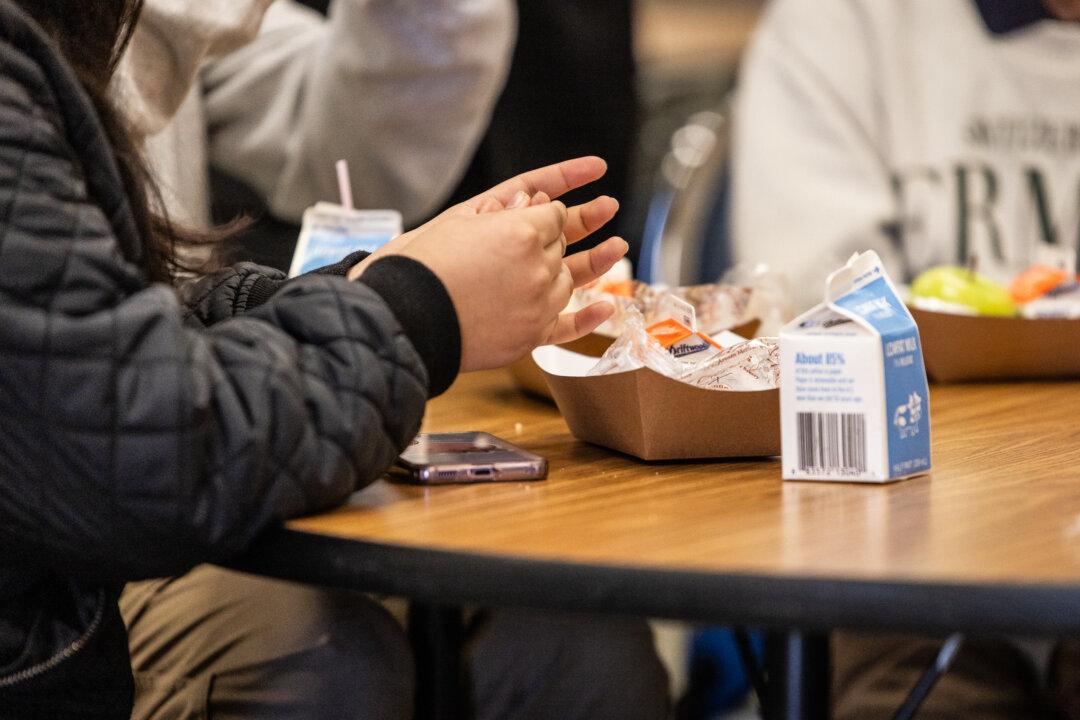Lawmakers in California passed a bill seeking to ban certain dyes from being used in food supplied to schools, as the chemicals pose a potential risk to children’s health.
In March, state Assemblymember Jesse Gabriel introduced AB 2316 which prohibits schools from serving foods containing six synthetic food dyes—Red 40, Yellow 5, Yellow 6, Blue 1, Blue 2, and Green 3.
The bill also bans the presence of titanium dioxide, a coloring agent used often in paints, cosmetics, plastics, and sunscreens.
These additives have been linked to several harms in children, including neurobehavioral issues, hyperactivity, cancer, and immune system effects.
The Consumer Brands Association expressed concerns about the bill, stating that the measure “usurps the comprehensive food safety and approval system for these colorings, would limit the availability of wholesome and healthy foods, and eliminates common opportunities for fundraising for sports teams and student clubs.”
The federal government already has a “comprehensive” food safety process reviewing food additives, including colorings, it said. In addition, the state of California has regulations governing the removal of certain chemicals from foods, attaching warning labels, and finding alternatives for food additives deemed to be unsafe.
“All of these additives have been thoroughly reviewed by the federal and state systems and many international scientific bodies and continue to be deemed safe,” the group said.
The California Medical Association expressed support for the bill, noting that a 2021 report from the California Office of Environmental Health Hazard Assessment (OEHHA) found the thresholds for synthetic food dyes set by the U.S. Food and Drug Administration to be outdated.
Harmful Effects of Dyes
According to a 2010 study, Red 40, Yellow 5, and Yellow 6 accounted for 90 percent of dyes used in food in the United States. These chemicals contain “benzidene, a human and animal carcinogen,” it noted.Potential side effects of Red 40 include asthma, allergic reactions, skin irritation, behavioral changes like depression and irritability, and hyperactivity, including ADHD.
“The scientific literature indicates that synthetic food dyes can impact neurobehavior in some children. Data from multiple evidence streams, including epidemiology, animal neurotoxicology, and mechanistic studies, support this finding,” it stated.
Children had the highest exposure to Red 40 from food consumption, followed by Yellow 5, and Yellow 6. The most common foods that led to food dye exposure were juice drinks, fruit-flavored drinks, icings, breakfast cereals, and soft drinks.
“As a lawmaker, a parent, and someone who struggled with ADHD, I find it unacceptable that we allow schools to serve foods with additives that are linked to cancer, hyperactivity, and neurobehavioral harms,” Gabriel said in March when he introduced AB 2316.
“This bill will empower schools to better protect the health and wellbeing of our kids and encourage manufacturers to stop using these dangerous additives.”







